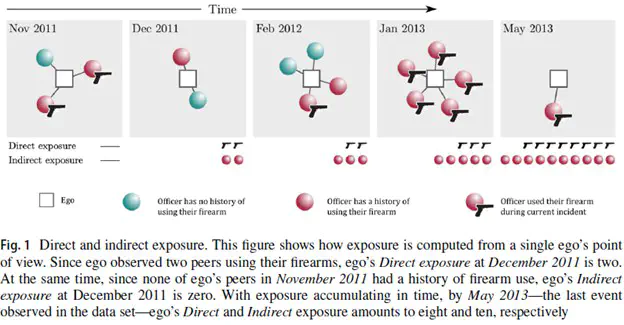Officer networks and firearm behaviors

Abstract
We reconstruct the networks of officers co-involved in force incidents to test whether interactions with weapon-prone peers impact firearm use. We draw from a statewide dataset of force incidents across law enforcement agencies in New Jersey and employ conditional likelihood models to estimate whether exposure to peers with histories of firearm use is associated with an officer’s own likelihood of firearm use net of other contextual confounders. We find preliminary evidence that officer firearm behaviors, including drawing, pointing, and discharging a firearm, are influenced by an officer’s peers. Greater exposure to colleagues with histories of firearm use is associated with a lower risk of using a firearm. We also find that officer features, including experience and race/ethnicity, are associated with the risk of firearm use. Our study suggests officers’ peers structure the risk of firearm use. Our data allow us to look at time order and rule out situational confounders pertaining to firearm use, however, do not allow us to infer causality. We discuss the study’s implications for understanding forearm behaviors and the role of network science in moving policing research forward.